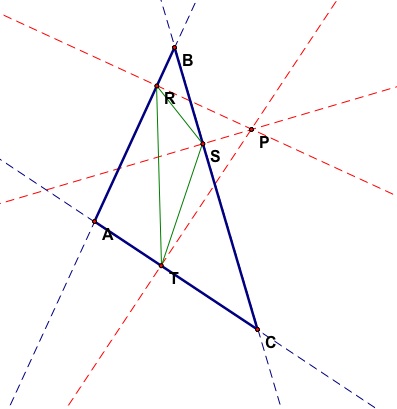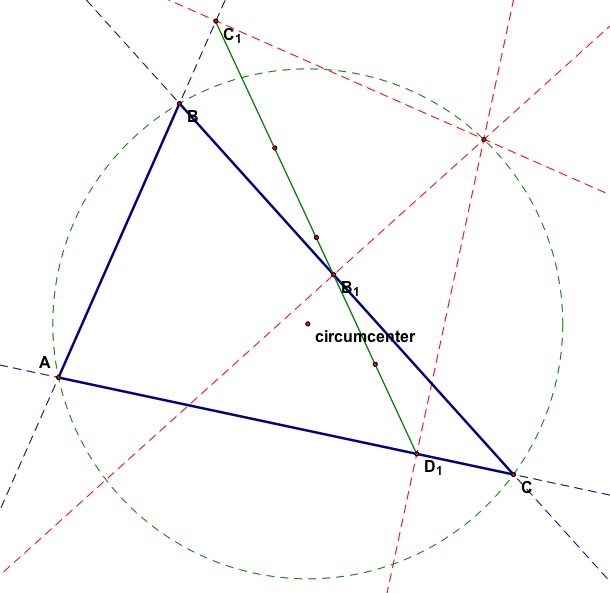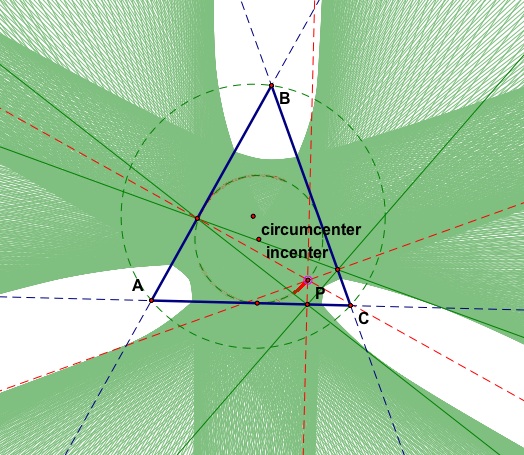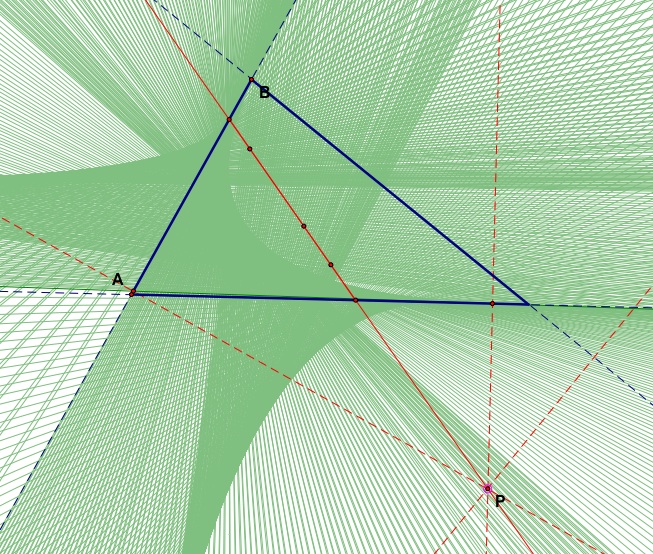
Assignment 9: Pedal Triangles
Now we will explore pedal triangles. Pedal triangles are dependent on a given
triangle and a given point. Perpendicular lines are drawn to each side of the
triangle such that they all pass through the given point. The pedal triangle
is formed by connecting the intersections of the sides of the triangles with
these perpendicular lines.

One interesting characteristic of pedal triangles is that the vertices become
collinear whenever the given point, P, is on the circumcircle of the original
triangle. When this happens, the triangle is said to be degenerate and the line
segment is called the Simson Line.

If we trace the lines containing the sides of the pedal triangle as point P moves
around the circumcircle we get the following picture:

If we trace the lines again, but this time as P moves around the incircle we
get the following picture:

When we trace the lines with P moving along the Euler line, three parabolic shapes
seem to appear.

And lastly, if we just trace the midpoints of the sides of the pedal triangle
as P moves along the circumcircle, the paths seems to form three interlacing
ellipses:

Return to Katy's Homepage